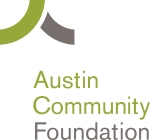First off, thanks for that can of cream of chicken. And the jar of pimentos always helps. Really!
But there are lots of other things in your pantry – or things you can throw in your cart at Costco! – that can help make the 2008 food drives a success. See this list of food drives and food-drive items below. You might be surprised by what you can donate.
WHO: CARITAS find out more
WHERE: Take food to any Austin, Round Rock, or Cedar Park STARBUCKS
WHEN: January 1 – 20
WHAT: Peanut Butter, Cleaning Supplies, Tuna, Kitchen equipment (pots, pans), Mac and Cheese, Bathroom Supplies, Uncooked boxed pasta, Hygiene Kits, Ramen Noodles, Laundry Supplies, Toilet paper, Evaporated Milk, Bagged or canned beans, Bagged white rice, Baby Food, Hygiene items such as: large diapers, shampoo, toothbrushes, toothpaste, deodorant, soap, disposable razor
WHO: Capital Area Food Bank find out more
WHERE: Randalls stores, Run-Tex stores, or schedule a pick-up
WHEN: Anytime
WHAT: DRY FOODS:canned meats like tuna, stew and chili (pop-tops preferred); canned green beans, canned corn and other canned vegetables; pasta & pasta sauce; pinto beans; rice; healthy cereal; peanut butter; baby food & baby formula
TIME-SENSITIVE FOODS on pallets: Discontinued items; Damaged products; Slow-moving items; Misrotated product; Pack changes or reformulations; Obsolete/discontinued promotional or end-of-season items;
Product samples; Close-dated product; Customer turndowns;
Unlabeled or mislabeled items; Products with cosmetic or production errors; Perishable product beyond retail sales that will not affect safe consumption
IN-KIND DONATIONS: Refrigerators and freezers; Vehicles for food transportation; Office furniture and equipment, like fax machines, desks, and computers; Office supplies like large quantities of notebook covers, clip boards, pens, and pencils; Technical support of the Food Bank computer network; Media sponsorships; Food drive materials; Printing services for CAFB publications; Soup bowls and celebrity signatures for the Empty Bowl Project; Agency and staff training; high-volume paper shredder; Office chairs; Packing tape; Paper-folding machine
WHO: Mother’s Milk Bank of Austin find out more
WHERE: The Mothers’ Milk Bank at Austin, 900 E. 30th Street, Suite 214,
Austin, Texas 78705. (512) 494-0800. Hours: M-TH 9:00-5:00, F 9:00-1:00
Seton Northwest Hospital, 3rd Floor-Mother/Baby Desk, 11113 Research Boulevard, Austin, TX 78759. (512) 324-6000 x67308. Hours: 9:00-3:00
WHEN: See hours above
WHAT: Breast milk from healthy moms, donor must qualify
Any other food drives in Austin or Central Texas? We love writing about this stuff. Send me a note: monica@goodcauseaustin.com
Filed under: Giving opportunities, Poverty/Basic Needs, Uncategorized | Leave a comment »







